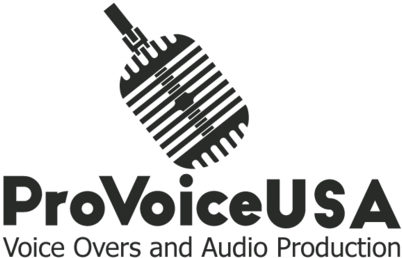Audio-Video Presentations (AVP) are handy tools for giving information during meetings, exhibits, trade expos, and lectures. They integrate images and sounds to be able to impart your lesson, message, product specs, services, and brand identity to your target audience. However, the success of an AV Presentation relies on a good voice-over narration: whether you are using a timed slideshow or a pre-edited video, your voice-over needs to be not only appropriate to the images, text, and videos being flashed or projected onscreen; it also needs to be read effectively to engage your audience and maximize the AVP’s impact. This is where your skill in voice acting and reading will be put to task. In order to make sure that your narration will hit the mark, your friends at ProVoice USA want to give you a few tips for creating a strong, effective, and engaging voice-over.
It goes without saying that for creating your voice-over; you will need the proper audio equipment: a (preferably unidirectional) microphone, an audio interface (for converting your audio into digital data), proper audio recording and editing software, a laptop or desktop PC, a microphone stand, and a pop filter. Are you ready? Let’s start:
Use a conversational tone and easy-to-read words – If you’re the person coming up with the script, make sure that your script has maximum readability. Use jargon and technical terms only when necessary, and make sure to explain these terms in your script if your audience is likely to be unfamiliar with them. Avoid being verbose and use plain language. When drafting and reading the script, try to evoke a conversational tone with your writing and delivery.
Go over the script and do “practice readings” – Try reading the script aloud in one pass, and see if any of the words trip you over. These may indicate rewrites to improve readability. Then, go over any jargon that needs to be properly pronounced and check for accuracy. Do another reading, this time; recording your performance. Avoid “ad-libs”, just stick to your script. Upon playback; check to see if your narration works within the context of the presentation. Once you are satisfied, it’s time to start recording.
Practice working with the microphone – Learn to keep your distance from the microphone. Ideally, a distance of between 6-12 inches away from the microphone will give you crisp, clean vocals. Also, make sure to mark your takes by leaving a few seconds of silence in between each take and announcing the section to be recorded, like “paragraph 4, page 2 take one”. Record your vocals in a quiet venue; without any distractions or ambient sounds. Be prepared to do multiple takes a section of the script at a time, and stop when you’re content with your performance.
Fine-tune your recording process – When recording, be conscious of your delivery: some voice-over talents have a tendency to read too fast or add unnecessary affectations in their delivery. Decide whether to read from the computer screen or from a printed manuscript: if you’re using a print-out, make sure that the fonts are easy-to-read and big enough to read; and that your text has a proper line and paragraph spacing. It will be much easier to record standing, as it gives you more leeway for gestures and expressions that will inform your delivery; but you can also choose to sit down. Your microphone’s stand and position will be determined by whether you stand or sit during takes. Use a pop filter to eliminate plosives and pops, and use a pair of good headphones for listening to your playback.
Hydrate and keep liquids on-hand – During recording, make sure that you hydrate your vocal cords with clear liquids: water and tea are the top choices. Avoid drinking cold liquids: just leave them at room temperature.
Make the video and images adjust to your voice-over and not the other way around – Lastly, when you find that your voice-over is not syncing up with the images and video, or you tend to get distracted trying to time the voice-over to sync with your slideshow effects and transitions; then tweak them so that they sync up with the voice over instead. Concentrate on having a good voice-over and sync your visuals to it.
Do you need a professional voice-over for your AVP? ProVoice USA offers Audio Production and Voice-over services for various media and applications such as Radio and TV commercials, E-Learning, Phone System, and Interactive Voice Response (IVR) telephone services. With over 20 years of experience and a roster of incredible Voice Talents, we can provide the right voice to go with your script. Get in touch with us at info@provoiceusa.com, or call us up at (877) 865-3459 to learn more about the services we offer and for more information.

